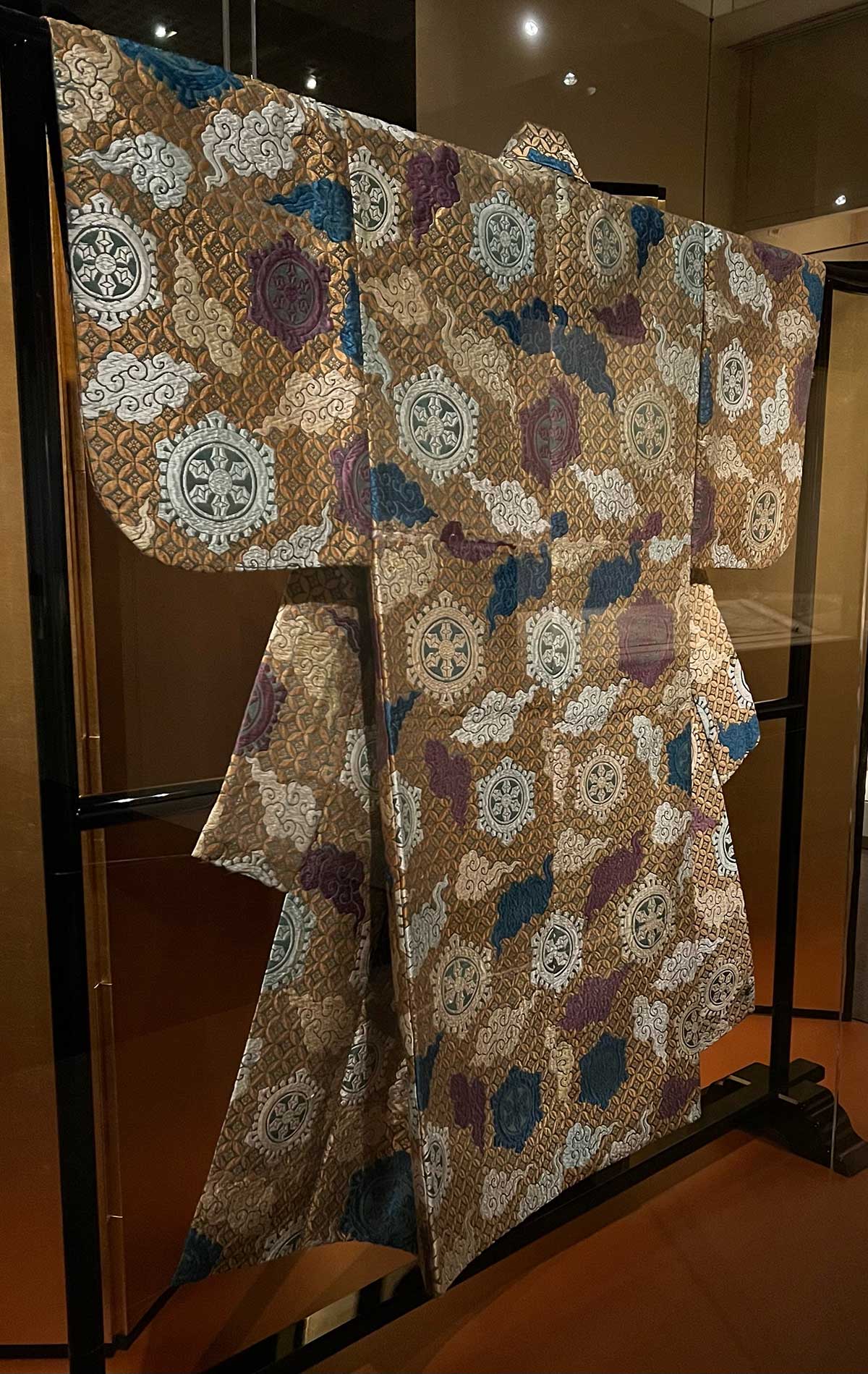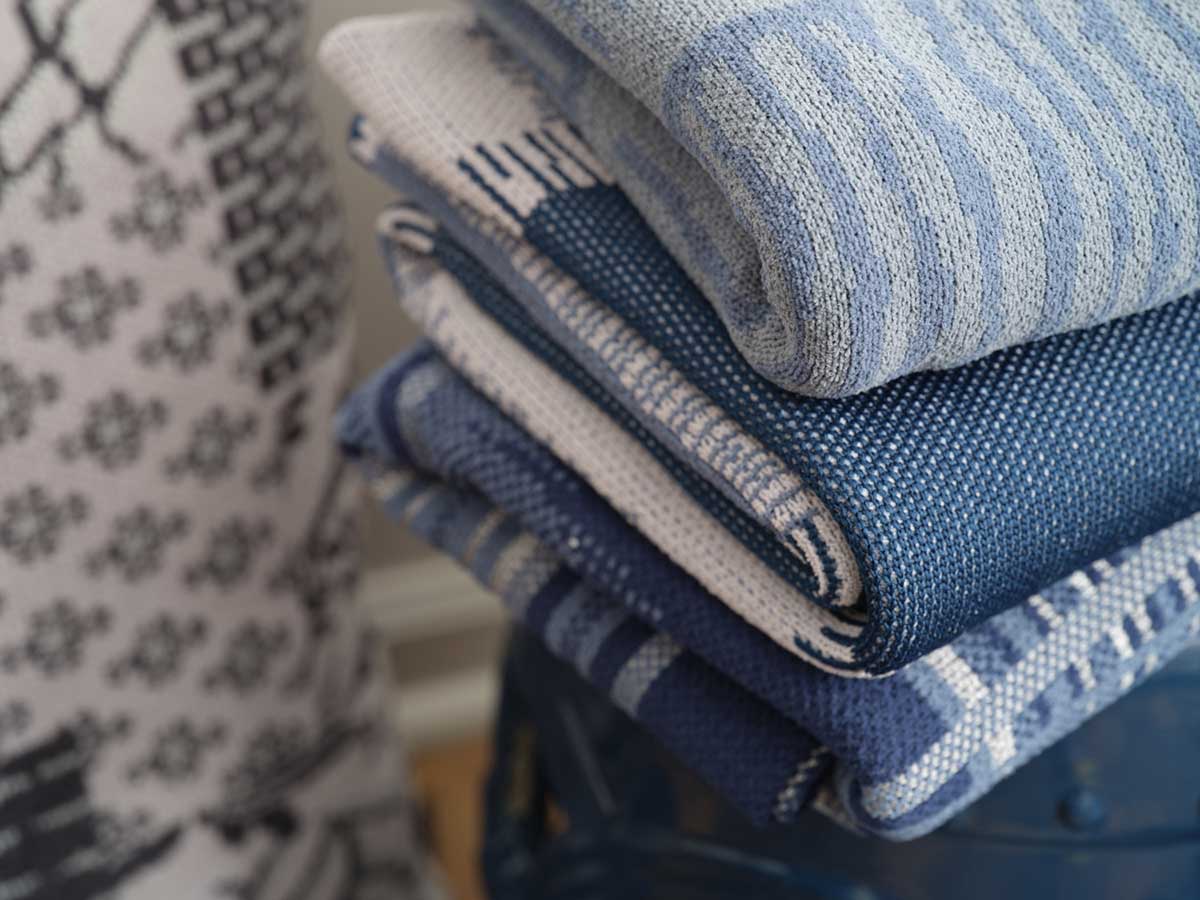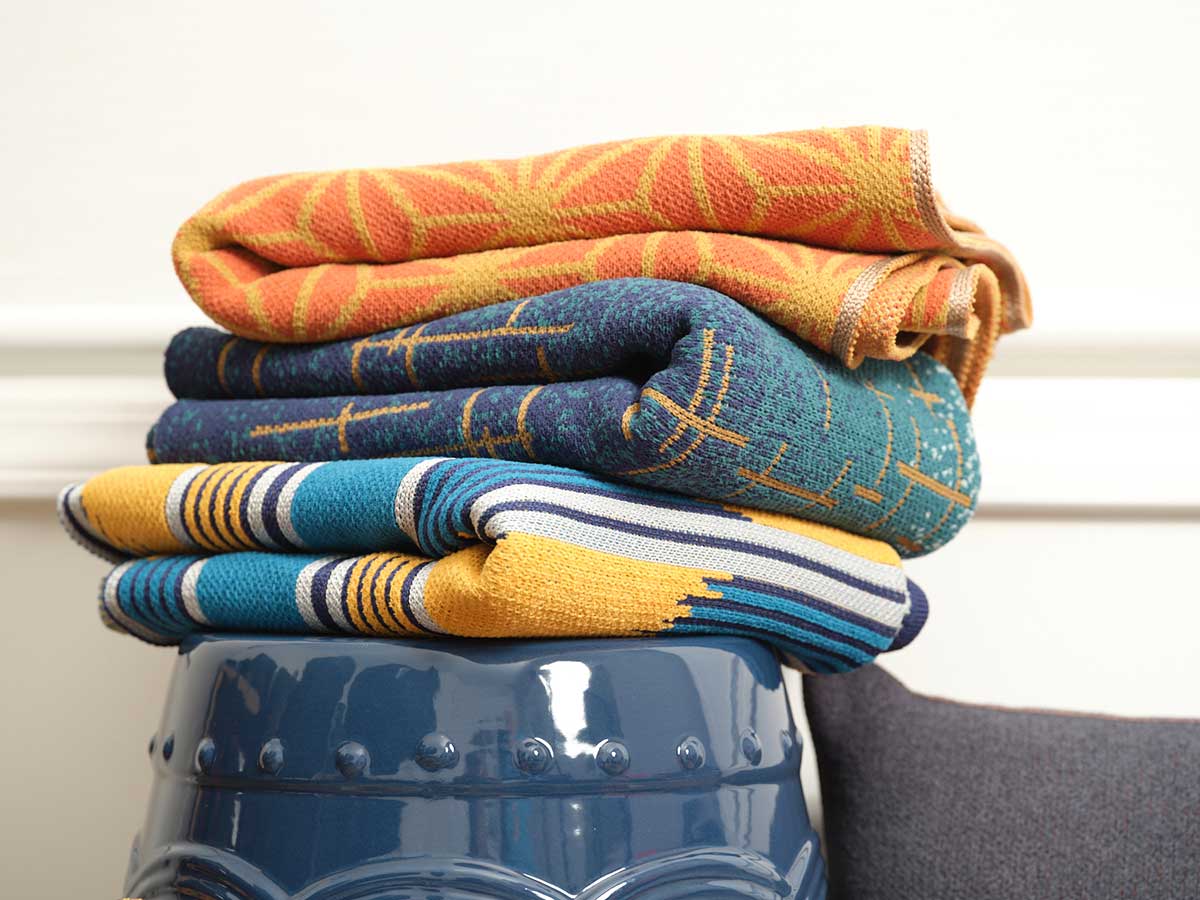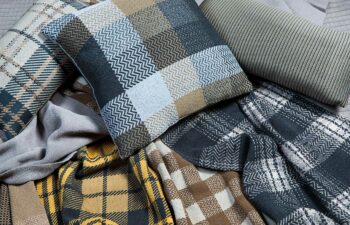“Kimono” simply means “the thing to wear”.
For years, I have admired the depth of traditional Asian textiles… the materials, embroidery, dyeing techniques, inventiveness, and interpretation of nature and faith all combined to create an amazing textile history.
It may have really gotten started for me when my sister served in the US Army in Korea. I was in graduate school, and she sent pictures (note, the old fashion way as this predated the digital era!) of the painted eaves of the temples. The painted versions of these images were part of my graduate thesis in textile design form. Books on my library shelf from that era have been carted from house to house over the years, so I’m sure you can understand that this collection is dear to the designer in me.

The V&A had a stunning publication by Anna Jackson from their collection called “Kimono: Kyoto to Catwalk”, highlighting the influence of the textiles, the shape of the garment and the contemporary translations of both. Ms. Jackson also edited “Kimono: The Art and Evolution of Japanese Fashion” from the Khalili Collections. Both are amazingly beautiful references.
Fast forward to the 2022 visit to New York City for the trade show that many of us attended. Saturday afternoon was spent at the Metropolitan Museum to see “Kimono Style” from the John C Weber Collection.
This exhibition will trace the transformation of the kimono from the late Edo period (1615–1868) through the early 20th century, as the T-shaped garment was adapted to suit the lifestyle of modern Japanese women. It will feature a remarkable selection of works from the renowned John C. Weber Collection of Japanese art that explore the mutual artistic exchanges between the kimono and Western fashion, as well as highlights from The Costume Institute’s collection.

The weaving, dyeing, and embroidery techniques for which Japan is famed reached their peak of artistic sophistication during the Edo period. Members of the ruling military class were the primary consumers of sumptuous kimono, each one being custom-made. At the same time, a dynamic urban culture emerged, and the merchant class used its wealth to acquire material luxuries. Kimono, one of the most visible art forms, provided a way for the townspeople to proclaim their aesthetic sensibility. Depictions of kimono in Japanese woodblock prints were widely studied by Western couturiers in the late 19th century. The garment’s comparatively loose, enveloping silhouette, and its rectilinear cut would have the most profound and lasting influence on Western fashion, with couturiers like Madeleine Vionnet and Cristóbal Balenciaga taking inspiration from the kimono for their avant-garde creations.
In the Meiji period (1868–1912), Western clothing was introduced to Japan. Simultaneously, modernization and social changes enabled more women to gain access to silk kimonos than ever before. Around the 1920s, affordable ready-to-wear kimono (meisen) became very popular and reflected a more Westernized lifestyle. These were sold in department stores modelled on Western retailers, following Western-style marketing strategies. To illustrate these connections, the exhibition will present over 60 kimonos alongside Western garments, paintings, prints, and decorative art objects.
Our interpretations of this vast tradition include –
– Textile techniques, such as embroidery, ikat (warp dyeing), and shibori (resist dyeing) and boro (mending patchwork)
– References from nature – waterfalls, sea moss, weeping willows, calligraphy, bamboo and the maple tree
– Musical references, such as hand drums
– Three Friends of Winter – pine, bamboo, and plum trees which bloom at the end of winter, signaling the approach of spring. It represents the ideal characteristics of a scholar gentleman.


